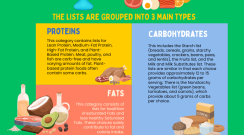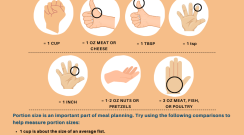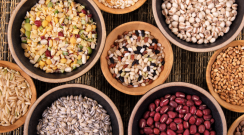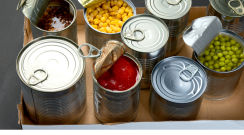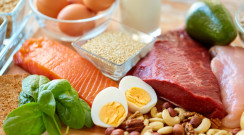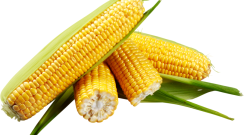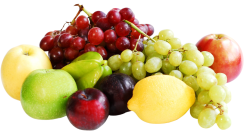The Food Lists section provides diabetes patients with comprehensive lists of foods categorized based on their nutritional content and impact on blood glucose levels. These lists serve as valuable resources for meal planning, offering guidance on selecting foods that align with dietary recommendations for managing diabetes. By referencing the Food Lists, patients can make informed choices about their food intake, helping them regulate blood sugar levels and optimize their overall health and well-being.
- Posted: 07 February 2024
Food is divided into 3 groups: carbohydrates, proteins, and fats. Carbs provide energy, so choose wisely with whole grains and veggies. Proteins like chicken and tofu help build and repair, while healthy fats like avocado and nuts keep you satisfied. Balancing these groups can play a significant role in maintaining blood glucose levels. Remember, moderation is key!
- Posted: 08 February 2024
Learn about the Key to Food Measurements. Accurate portions are essential for managing diabetes.
- Posted: 08 February 2024
Understanding portion sizes is crucial for effective meal planning. Here's a helpful list to guide you through various food portions.
- Posted: 17 March 2024
Whole grains, such as brown rice, quinoa, and oats, are nutrient-rich foods that provide essential vitamins, minerals, and dietary fiber, promoting digestive health and reducing the risk of chronic diseases like diabetes and heart disease.
- Posted: 17 March 2024
When managing diabetes, it's important to be mindful of sweets, desserts, and other carbohydrate-rich foods, as they can cause spikes in blood glucose levels. Opting for healthier alternatives like fruits or yogurt can satisfy cravings while keeping blood glucose levels in check.
- Posted: 17 March 2024
Canned foods often contain high levels of sodium, which can contribute to high blood pressure and other health issues. When choosing canned foods, opt for low-sodium or no-salt-added options to help reduce your sodium intake and support better health.
- Posted: 17 March 2024
For individuals managing diabetes, choosing snacks and extras wisely is crucial. Opt for nutrient-dense options like fresh fruits, vegetables, nuts, and yogurt to help maintain stable blood glucose levels and support overall health.
- Posted: 17 March 2024
Non-starchy vegetables are a vital part of a diabetes-friendly diet, rich in fiber, vitamins, and minerals, yet low in carbohydrates. Incorporate leafy greens, broccoli, peppers, and cucumbers into meals for added nutrition and to help manage blood glucose levels.
- Posted: 17 March 2024
Explore strategies for incorporating nonstarchy vegetables into a balanced eating plan.
- Posted: 17 March 2024
Explore the options for incorporating milk and milk substitutes into your diet as a diabetes patient.
- Posted: 17 March 2024
Explore strategies for incorporating milk and milk substitutes into a balanced eating plan.
- Posted: 17 March 2024
Discover gluten-free food options suitable for diabetes patients.
- Posted: 17 March 2024
Explore strategies for incorporating fruits into a balanced eating plan.
- Posted: 17 March 2024
Learn more about what a carb choice on the combination foods list includes.

